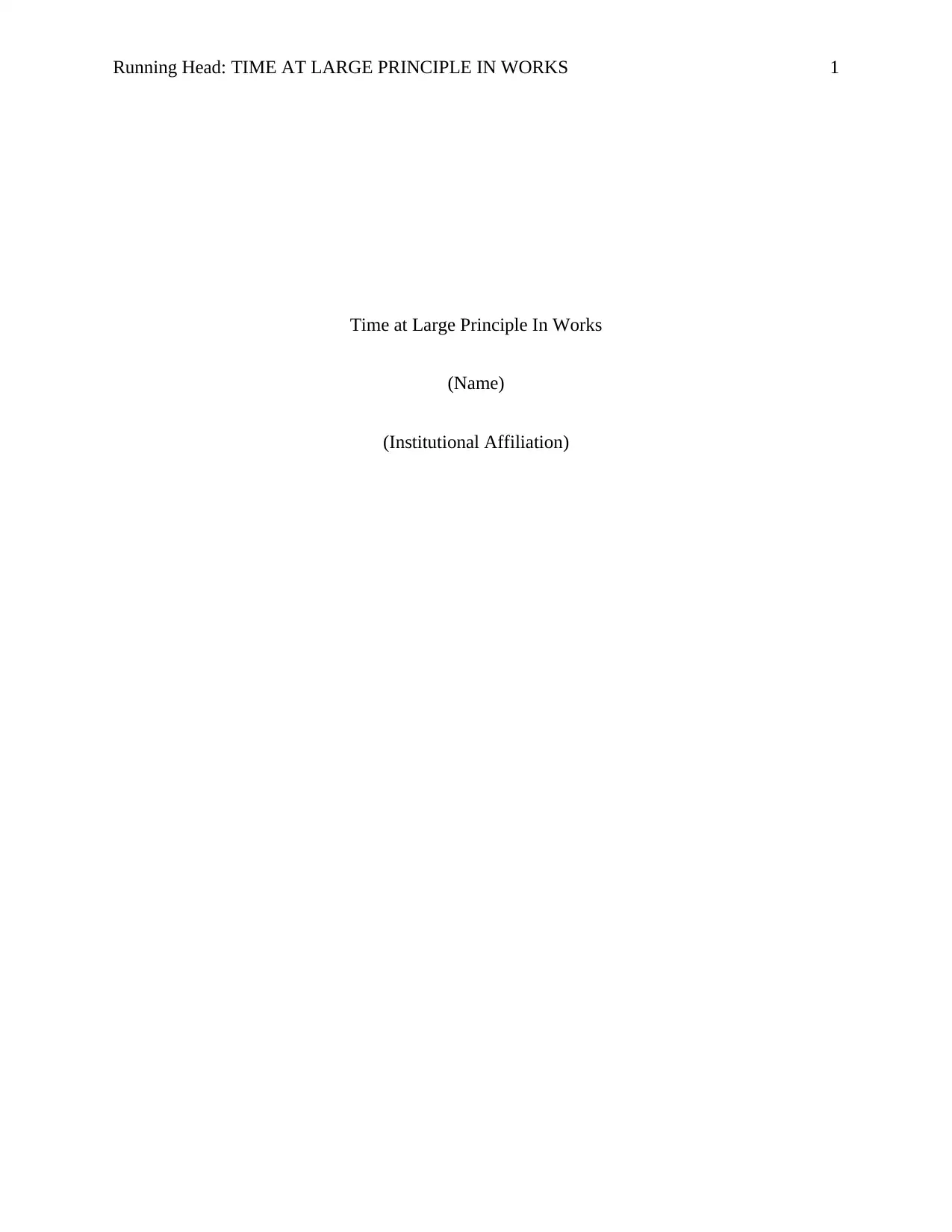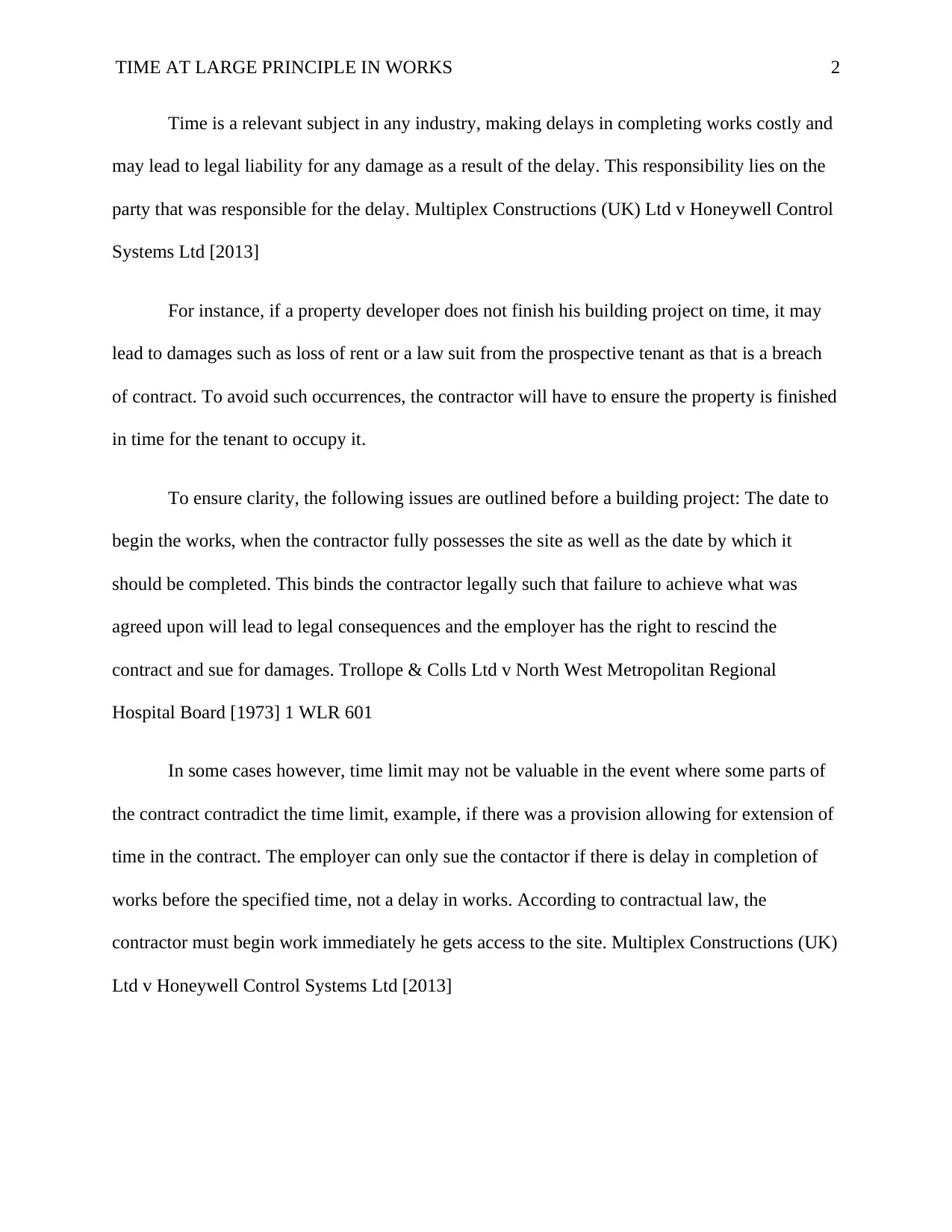Analysis of Time at Large Principle in Works: A Legal Report
VerifiedAdded on 2020/03/16
|4
|433
|37
Report
AI Summary
This report examines the Time at Large Principle within the context of construction law, focusing on its implications for contractual obligations and potential legal liabilities. It explores the significance of time limitations in building projects, emphasizing the importance of deadlines and the consequences of delays, such as financial penalties or legal disputes. The report discusses relevant case law, including Multiplex Constructions (UK) Ltd v Honeywell Control Systems Ltd and Trollope & Colls Ltd v North West Metropolitan Regional Hospital Board, to illustrate the practical application of the principle. The author argues for the need for flexibility, recognizing that unforeseen factors like additional works may impact project timelines. The report concludes by advocating for a nuanced approach to time management in construction, acknowledging that the rigid application of time limits may not always be feasible or fair.
1 out of 4






![[object Object]](/_next/static/media/star-bottom.7253800d.svg)